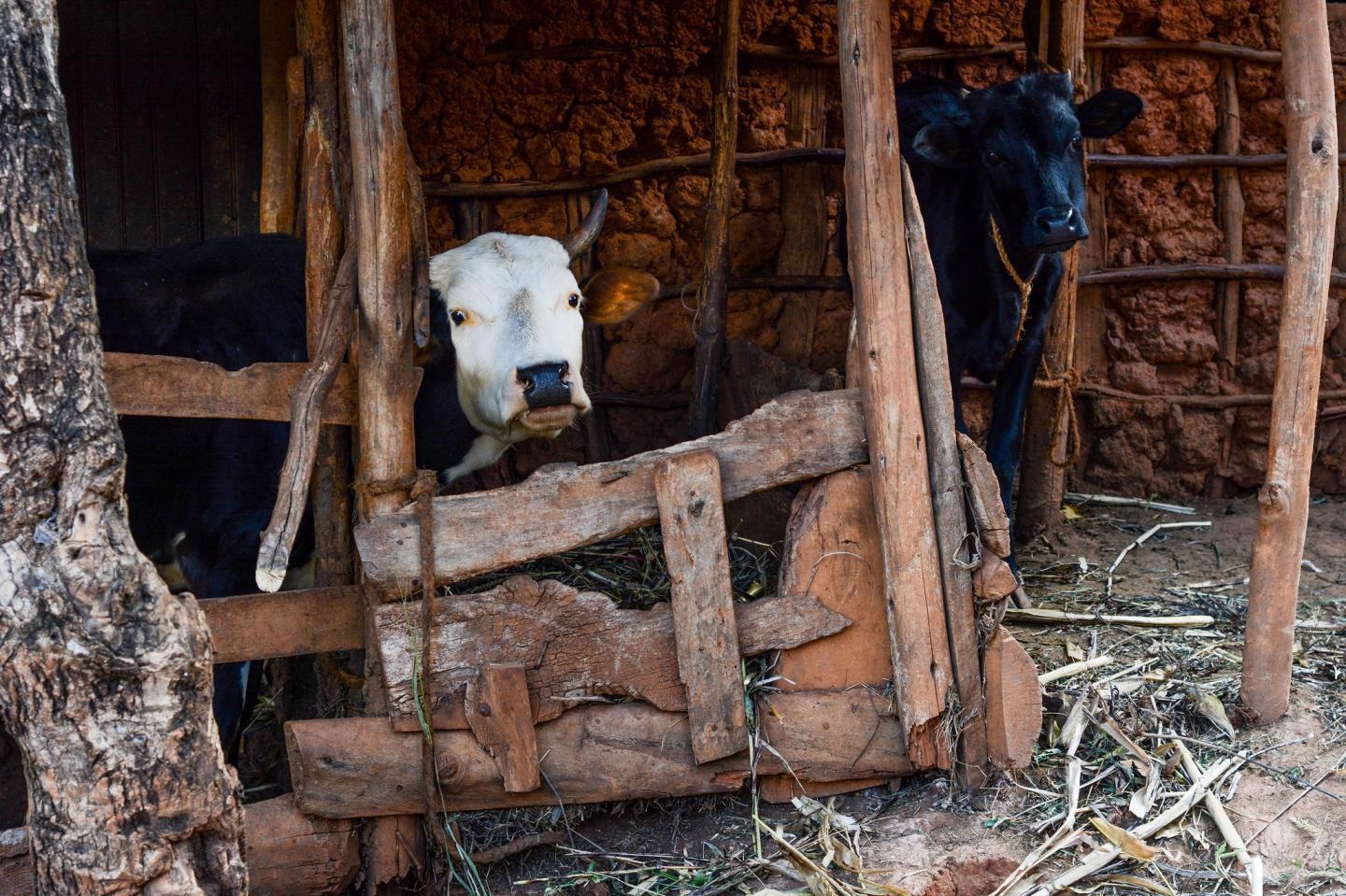Dec 17 2020
People living in industrialized regions such as Europe or the United States are often encouraged to consume less meat and animal-based foods to ensure a healthier diet that is lower in emissions.
 Livestock being fed improved forages in Tanzania. Image Credit: Georgina Smith/International Center for Tropical Agriculture.
Livestock being fed improved forages in Tanzania. Image Credit: Georgina Smith/International Center for Tropical Agriculture.
However, such suggestions are not versatile solutions in low- or middle-income countries, where livestock are vital to incomes and diets, debate researchers in a study published recently in Environmental Research Letters.
Conclusions drawn in widely publicized reports argue that a main solution to the climate and human health crisis globally is to eat no or little meat but they are biased towards industrialized, Western systems.
Birthe Paul, Study Lead Author and Environmental Scientist, Alliance of Bioversity International and International Center for Tropical Agriculture
For instance, only 13% of all scientific literature related to livestock published since 1945 covers Africa. However, Africa is home to 32%, 27%, and 20% of worldwide goat, sheep and cattle populations.
Of the world’s top 10 institutes that publish livestock research, 8 are in France, the Netherlands, the United Kingdom and the United States. Only two, which include the International Livestock Research Institute (ILRI), are headquartered in Africa, where the livestock sector is considered as the backbone of the economy and where little data is available.
Moreover, researchers argue that a singular focus on negative livestock-associated environmental effects ignores the crucial but more positive role played by livestock in ecosystem services, income and asset provision, or insurance in low- and middle-income countries. It even ignores more systemic questions regarding how animals are bred.
Mixed systems in low- and middle-income countries, where animal production is fully linked with crop production, can actually be more environmentally sustainable. In sub-Saharan Africa, manure is a nutrient resource which maintains soil health and crop productivity; while in Europe, huge amounts of manure made available through industrialized livestock production are overfertilizing agricultural land and causing environmental problems.
An Notenbaert, Alliance of Bioversity International and International Center for Tropical Agriculture
Pastoralists throughout Africa’s savanna pen their herds at night, a practice demonstrated to raise nutrient diversity and biodiversity hotspots, thus enhancing the landscape. Feed production might also be more local; by contrast, in industrialized systems, it is mainly imported.
In Brazil, soybean is a significant driver of deforestation in the Amazon and is converted into concentrate and exported to feed animals in places such as Vietnam and Europe.
Meat production itself is not the problem. Like any food, when it is mass-produced, intensified and commercialized, the impact on our environment is multiplied. Eliminating meat from our diet is not going to solve that problem. While advocating a lower-meat diet makes sense in industrialized systems, the solution is not a blanket climate solution, and does not apply everywhere.
Polly Ericksen, Program Leader of Sustainable Livestock Systems, International Livestock Research Institute
The Food and Agriculture Organization reports that the consumption of meat in sub-Saharan Africa will be as low as an average of 12.9 kg per person by 2028, as a result of low incomes and climate-induced heat-stress in animals, besides other factors, with human health impacts such as stunting and malnutrition. By contrast, meat consumption in the United States is anticipated to increase above 100 kg per person, which is the highest in the world.
Researchers recognize that livestock systems are known to be a significant source of atmospheric greenhouse gases. However, more data is required for low- and middle-income countries to create national mitigation plans.
They also emphasize the need to look beyond making animals more productive and toward resource-efficient and environmental systems that actively decrease emissions from agriculture.
The researchers suggest several higher-impact environmental solutions. One of them is the enhanced animal feed that makes animals discharge less greenhouse gases, such as methane, per kilogram of meat or milk. Improved management of grazing land and mixing crop and livestock where manure is plowed back into the soil can be advantageous to both farmers and the environment.
“Better decisions about how to reduce global greenhouse gas emissions from livestock and agriculture in low- and middle-income countries can only be driven by better data,” stated Klaus Butterbach-Bahl, at the Institute of Meteorology and Climate Research, Atmospheric Environmental Research (IMK-IFU) Karlsruhe Institute of Technology (KIT) and ILRI.
“For that, we need more—and not less—locally-adapted and multi-disciplinary research together with local people in low- and middle-income countries, on sustainable livestock development, with all the supporting financial incentives, policies and capacity in place to intensify livestock production in a more sustainable way, on a bigger scale,” added Butterbach-Bahl.
Journal Reference:
Paul, B. K., et al. (2020) Sustainable livestock development in low and middle income countries—shedding light on evidence-based solutions. Environmental Research Letters. doi.org/10.1088/1748-9326/abc278.